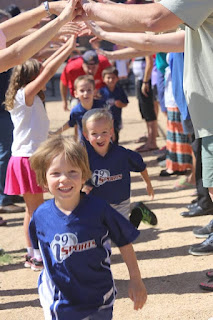Grassroots Sports: Much More Than Young Children Playing
I have been working in the sports industry for the past twenty years. Like many other sectors, there are certain sports industry words that are just tossed around over and over again. Words like ‘ecosystem,’ or ‘authentic,’ or ‘engagement.’ One word commonly used but rarely understood is the word ‘grassroots.’ The dictionary definition of grassroots is the most basic level of an activity or organization. Grassroots sports can be defined as community-driven sports activity at a local level that is mainly recreational, rather than being about achieving high levels of performance or commercial success.
Investing in grassroots sports is regularly posited as the answer to the challenges facing the development of sport within a country or region. I heard this commonly held belief during my years working at MLS as it related to supporting the growth of soccer in North America. Here in India, football stakeholders who are desperate to grow the beautiful game in the country sound like broken records as they blurt this out at conferences, meetings, and coffee shop conversations. And while I do subscribe to this approach to sports development, I feel that there is so much more to this statement that needs to be considered.
I started to think about this during a recent trip to my childhood hometown of Huntington Beach, California. While there, I made it a point to spend at least an hour each morning walking around the park near my house. This was not just any park, though. It was Roch Courreges Elementary School. The place where I spent my first six years of education, and, most importantly, where my football journey officially kicked off. Each time I walked around the pitch, my heart was flooded with memories from thirty-seven years ago, when I first started playing organized sport in the form of American Youth Soccer Organization (AYSO) pee-wee soccer.
I was surprised as the memories were not focused on the goals I scored or the skills I performed. No, I would think about my parents and brother coming out with their folding chairs to support me on the sidelines, about the perfectly cut oranges distributed at halftime, the snacks and juice boxes handed out after the matches, the team pizza parties, the fundraisers, and the banner that expressively displayed our cheesy, but creative team name – Goal Gettin’ Geckos. What this communicated to me was that it was the environment that touched my heart, more than the game itself. I was fortunate to be a decent player, even at the age of four; however, this fun and supportive environment would have probably ensured that I continued playing even if I was the worst player on the pitch during those initial years.
My point is that the emphasis of grassroots sport should not be limited to just getting children under the age of twelve to play sport. It must be about building a culture of sport and working with parents, community leaders, and local companies interested in this important cause. When it comes to choosing how to spend their free time, kids have so many options, most of them associated with the overly isolated digital world. We can attempt to keep kids showing up to the pitch or ground or court week after week by creating an environment that is conducive for the child and their parents to have fun. This is achieved through planning activities, outings, and other ways for those associated with the team or league to connect with one another. It does not mean spending more money; it is about enrolling people around the idea that the best way to support their child’s holistic growth is by helping to create an engaging culture around their grassroots pursuits, be it sports, arts, etc.
I am grateful that the AYSO professionally organized a league for four-year-old me to participate in back in 1984. I am grateful that my childhood friend, Kevin Moore, told me about the league and that his father, Coach Mike, chose me as his first pick in the selection process. I am grateful that my parents signed me up for the league, attended every match, and fully participated in team meetings and outings. These experiences laid the foundation for my love of sport. It also set the wheels in motion for me to spend the rest of my youth playing sport and my adult life up to this point contributing to the world through this powerful platform.
So, I share the following message with all those who want to contribute to the growth of sport in a neighborhood, city, region, or country. Do not only focus on the participants, playing surface, and equipment – think about the environment that you are creating to support, encourage and celebrate the next generation. The sport may get them to the ground, but the culture and environment will keep them showing up day after day, week after week, year after year.








there are many good things notice in this blog we are also a love for football watch- https://youtu.be/1qWNusSkpgo
ReplyDelete